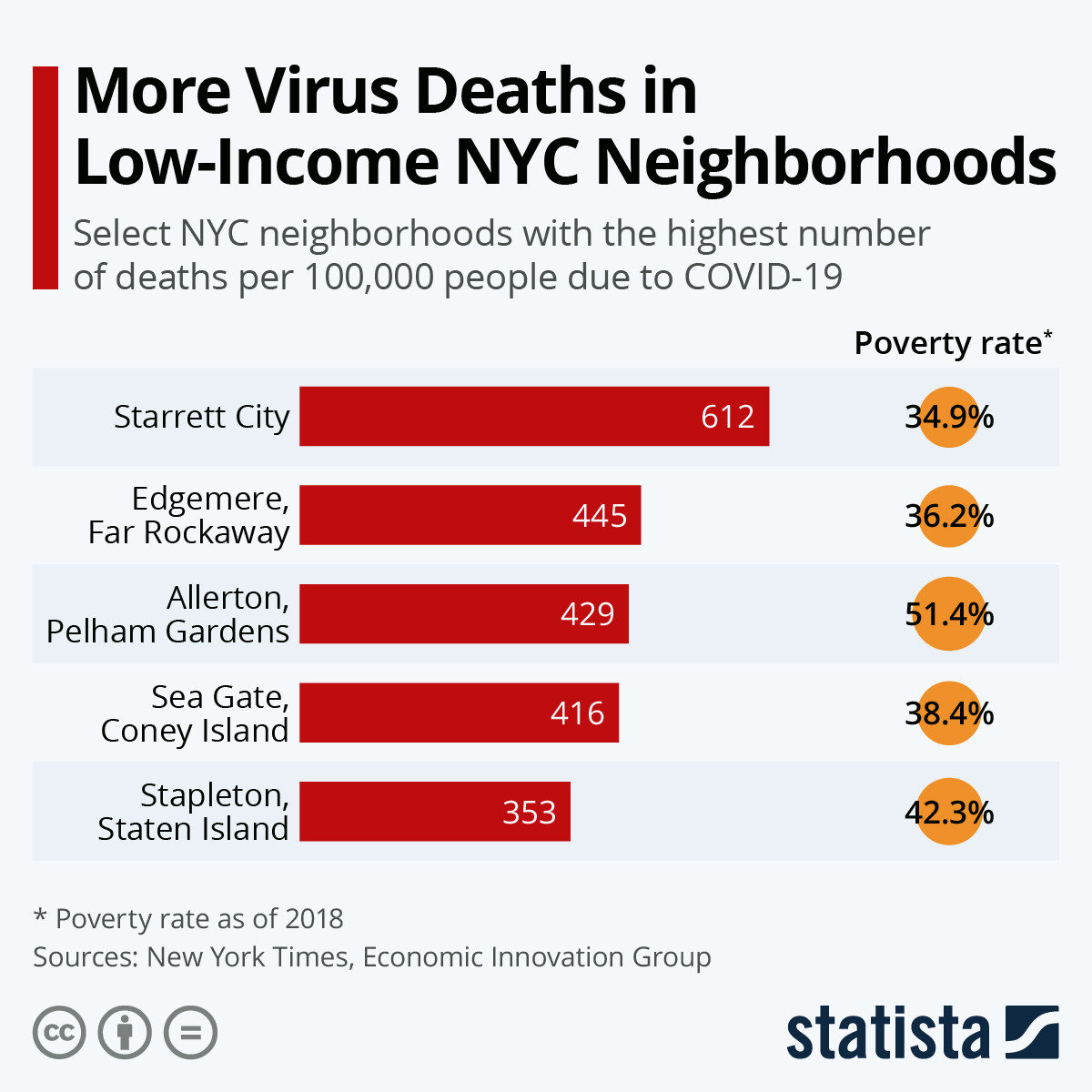Total new cases, hospitalizations and deaths in New York City from COVID-19 are finally coming down to early March levels. Now, as the city collects and shares more data, it’s becoming painfully apparent that low-income minority residents have been most affected.
In data from the New York City Health Department compiled by The New York Times, the highest death rates per 100,000 people in the city come from many neighborhoods where over 30 percent of residents live at or below the poverty line. Comparing the death rates per capita to poverty data from the Economic Innovation Group, the neighborhood with the highest death rate at 612 per 100,000 – Starrett City in Brooklyn – has a poverty rate of nearly 35 percent. Allerton in Pelham Gardens had the fourth-highest death rate at 429 per 100,000 and a poverty rate of nearly 52 percent.
Many of these neighborhoods also have high concentrations of black and Latino people, providing evidence that shows how both income and race play a crucial role in whether a person lives or dies from COVID-19.
Wealthier neighborhoods, primarily in Manhattan or the upper western areas of Brooklyn, have reported substantially fewer – even zero – deaths from COVID-19 when compared to surrounding poorer regions in the Bronx, Queens and Long Island.





















